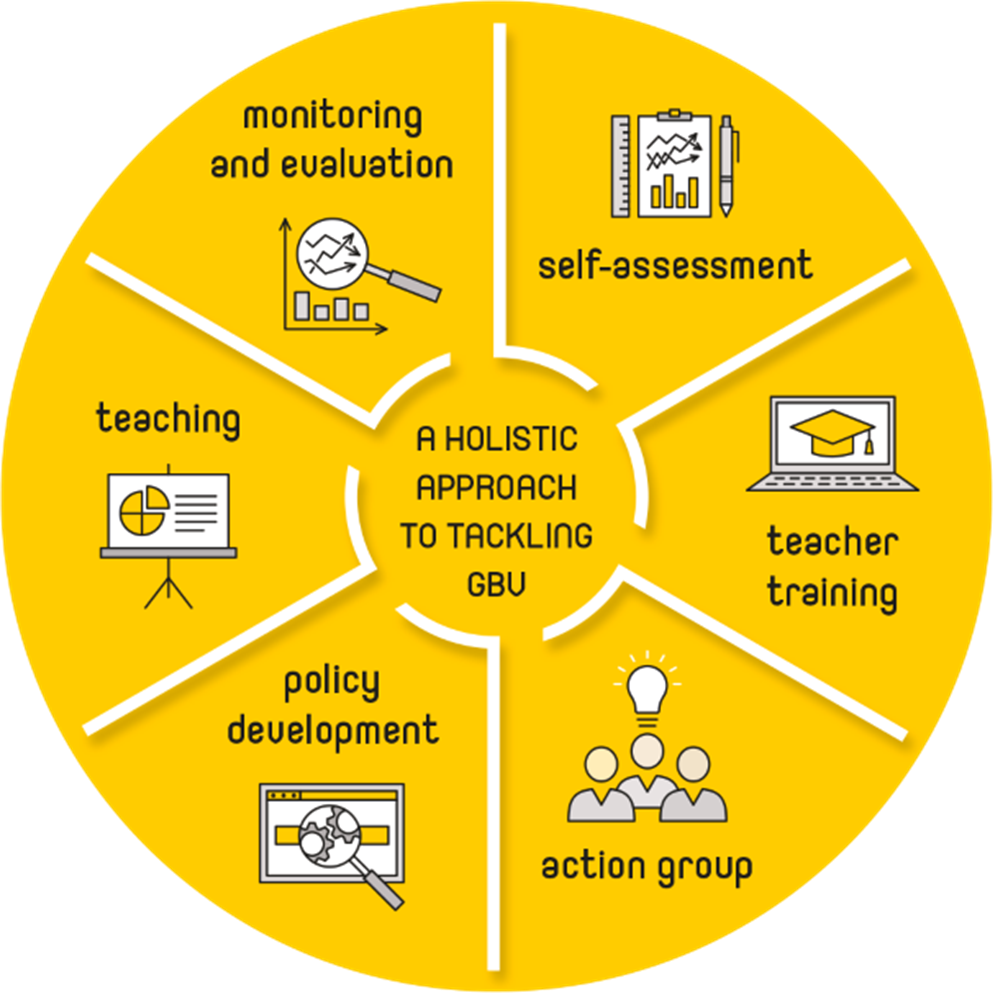Equally Safe at School (ESAS) Evaluation: type I hybrid effectiveness-implementation trial to evaluate a whole-school approach to addressing Gender-Based Violence in Scottish secondary schools
The research team is undertaking a national evaluation which aims to establish the benefits of Equally Safe at School (ESAS) for schools. Around 35 schools are taking part between 2023 and 2026. To provide the most reliable comparison, schools are randomised to start ESAS immediately or to join a ‘waitlist’ and start ESAS one year later. Six of the ‘immediate start’ schools are ‘case-study’ schools, providing more detailed information.
The evaluation assesses whether the ESAS intervention is effective in reducing sexual harassment within secondary schools alongside other potential benefits. It also looks at whether the ESAS intervention represents value for money, and whether it is delivered well. Evidence from the evaluation will help policymakers decide how to address GBV in schools.
The Evaluation is funded by the National Institute for Health and Care Research [grant 154376].
If you would like to find out more about research and evaluation in ESAS, please contact us at:
Email: sphsu-esas@glasgow.ac.uk

Staff
University of Glasgow
Kirstin Mitchell (PI)
External collaborators
Rape Crisis Scotland
Niamh Kerr
Lisa Waiting
Kathryn Dawson
Publications
This paper presents a system map that outlines the school-level factors crucial to tackling gender-based violence (GBV) and the connections between them. The map can serve as a tool to support discussions with staff and students on improving strategies to address GBV. The paper explores how secondary schools shape the disclosure, reporting, and handling of sexual harassment, focusing on behaviours, processes, and culture. Drawing on data from the ESAS pilot phase, it highlights how prioritising the issue and educating students and staff can build knowledge and confidence. Conversely, ineffective reporting systems and limited communication around safeguarding undermine trust in the system, young people’s willingness to report, and staff overall engagement with sexual harassment prevention and response. The paper presents possible opportunities for effecting systems change.
A research brief presents a 3 page summary of the above-mentioned paper.
A paper on prevalence of sexual harassment in Scottish Schools is based on the ESAS pilot phase and found that two-thirds of students report recent experience of one or more of 17 sexual harassment behaviours in the last three months. At school, sexual harassment most commonly involves unwanted jokes and gestures and showing or sending unwanted sexual images or messages and less frequently includes kissing or sexual touching. Students expressed uncertainty about acceptable and unacceptable behaviour and said that much depended on how well they knew the other person, their understanding of intent and the degree of pressure, persistence and physicality.
An animated video describes school-based GBV from the perspective of students and is a helpful discussion-starter with students, staff, parents and stakeholders.
The theory of change explains how the ESAS programme works and the conditions in which it works best. It is helpful for those who want to know more about the ESAS approach.
This paper presents the evaluation protocol, published in BMJ Open.

